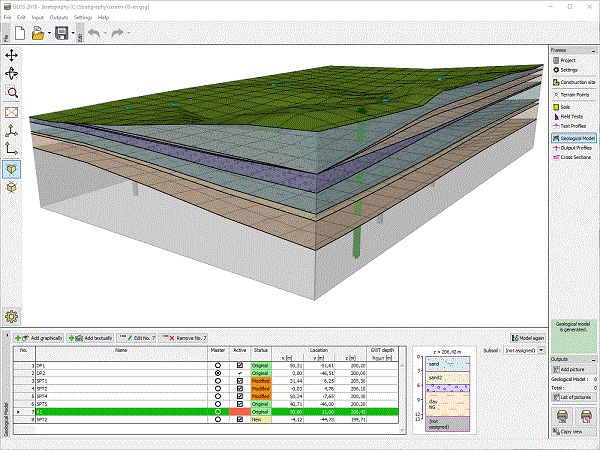In today’s construction landscape, the integration of technology is pivotal for successful project execution. Geotechnical engineering plays a crucial role in understanding soil behavior, site conditions, and structural integrity.
As projects become increasingly complex, utilizing specialized geotechnical software is essential for engineers and construction professionals. This article delves into some of the most essential geotechnical software tools that are shaping modern construction projects.
1. PLAXIS
Overview
PLAXIS is a finite element software package used for the analysis of deformation and stability in geotechnical engineering. It allows engineers to model complex soil-structure interactions and assess the effects of construction activities on surrounding structures.
Key Features
- Advanced Material Models: PLAXIS offers a variety of material models to simulate different soil behaviors, including elastic, plastic, and viscoelastic models.
- 3D Modeling Capabilities: The software supports 3D modeling, allowing for accurate simulations of complex geometries.
- Construction Sequence Modeling: Engineers can model the construction sequence to evaluate the impacts of excavation and other activities over time.
Applications
PLAXIS is widely used for slope stability analysis, tunneling, foundation design, and other geotechnical applications. Its robust modeling capabilities help engineers make informed decisions about site conditions and structural designs.
2. GeoStudio
Overview
GeoStudio is a suite of geotechnical software tools that includes SLOPE/W for slope stability analysis, SEEP/W for groundwater flow, and SIGMA/W for stress-deformation analysis. This comprehensive software suite caters to various aspects of geotechnical engineering.
Key Features
- Integrated Solutions: GeoStudio offers an integrated platform for analyzing different geotechnical problems, allowing for seamless data transfer between modules.
- User-Friendly Interface: Its intuitive interface makes it accessible for both experienced and novice users.
- Comprehensive Reporting: The software generates detailed reports and visualizations to aid in presenting findings to stakeholders.
Applications
GeoStudio is suitable for projects involving embankments, landslides, retaining structures, and earth dams. The software’s ability to analyze groundwater flow and its effects on soil stability makes it invaluable for geotechnical investigations.
3. gINT
Overview
gINT is a software tool for geotechnical data management and analysis. It provides functionalities for managing subsurface data, generating borehole logs, and performing laboratory test analyses.
Key Features
- Data Management: gINT allows users to store, manage, and analyze geotechnical data efficiently, making it easy to access historical information.
- Customizable Reports: The software enables the creation of customized reports and templates for borehole logs and geotechnical investigations.
- Integration Capabilities: gINT can integrate with other software tools, facilitating data exchange and enhancing workflow efficiency.
Applications
gINT is commonly used in site investigations, environmental assessments, and construction projects requiring detailed geotechnical reporting. Its ability to streamline data management is essential for large-scale projects with extensive subsurface data.
4. SLOPE/W
Overview
SLOPE/W is a powerful software program designed for slope stability analysis. It helps engineers assess the factors influencing slope stability and identify potential failure mechanisms.
Key Features
- Limit Equilibrium Analysis: SLOPE/W employs limit equilibrium methods to analyze slope stability under various conditions.
- Graphical User Interface: The software features an easy-to-use interface that simplifies the modeling process.
- Sensitivity Analysis: Users can perform sensitivity analyses to understand how changes in parameters affect slope stability.
Applications
SLOPE/W is particularly useful for projects involving earthworks, embankments, and natural slopes. Its ability to model complex geometries and loading conditions makes it a valuable tool for geotechnical engineers.
5. OpenRoads Designer
Overview
OpenRoads Designer is an advanced civil engineering design software that integrates geotechnical data with road and site design. It enhances collaboration between geotechnical and civil engineering teams.
Key Features
- Geospatial Integration: OpenRoads allows for the integration of geospatial data, enabling engineers to visualize site conditions effectively.
- Design Automation: The software automates design processes, reducing manual errors and improving efficiency.
- Collaboration Tools: OpenRoads provides tools for collaboration between teams, facilitating communication and data sharing.
Applications
OpenRoads Designer is essential for infrastructure projects, including roads, highways, and utilities. Its integration of geotechnical data enhances the design process, ensuring that site conditions are considered in the final plans.
6. Settle3D
Overview
Settle3D is a geotechnical software tool designed for settlement analysis and consolidation of soils. It allows engineers to evaluate the settlement behavior of structures over time.
Key Features
- 1D and 2D Modeling: Settle3D supports both one-dimensional and two-dimensional settlement analyses.
- Consolidation Calculations: The software includes features for calculating consolidation and pore pressure dissipation.
- Interactive Graphics: Settle3D offers interactive graphical outputs to visualize settlement predictions.
Applications
Settle3D is used in foundation design, site investigations, and assessing the impacts of loading on soil structures. Its capability to model long-term settlement behavior is crucial for ensuring structural safety.
Conclusion
The landscape of construction projects is evolving rapidly, with technological advancements shaping the way geotechnical engineers approach their work.
The essential geotechnical software discussed in this article provides tools that enhance analysis, improve data management, and foster collaboration among teams.
As construction projects continue to grow in complexity, the adoption of these software solutions will be critical for ensuring project success and structural integrity.
Investing in the right geotechnical software not only streamlines workflows but also significantly reduces the risks associated with construction in challenging site conditions.
Also Read
Understanding the importance of groundwater control in construction projects
Building on Slopes: Geotechnical challenges and solutions

